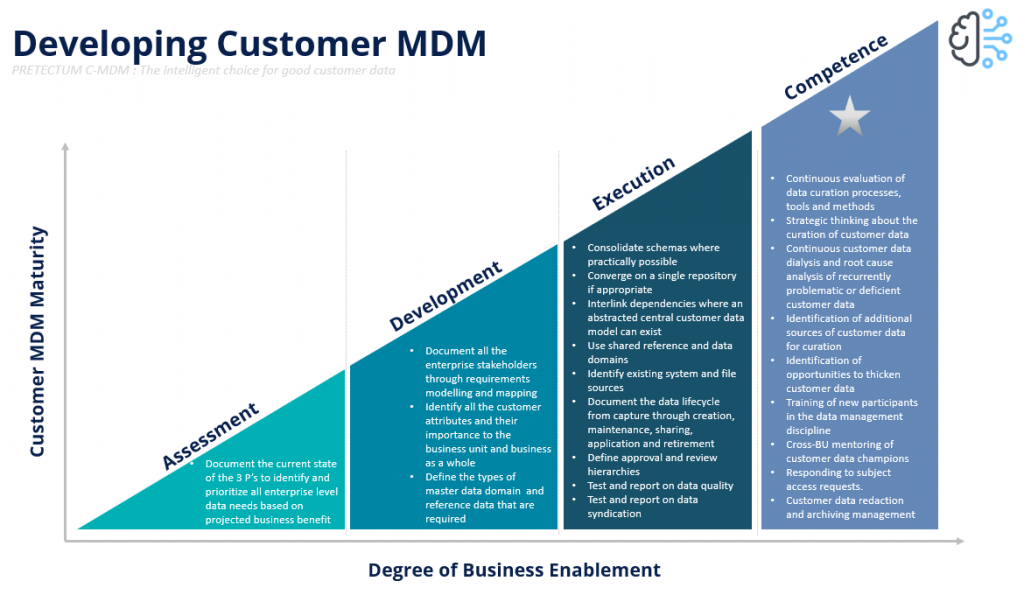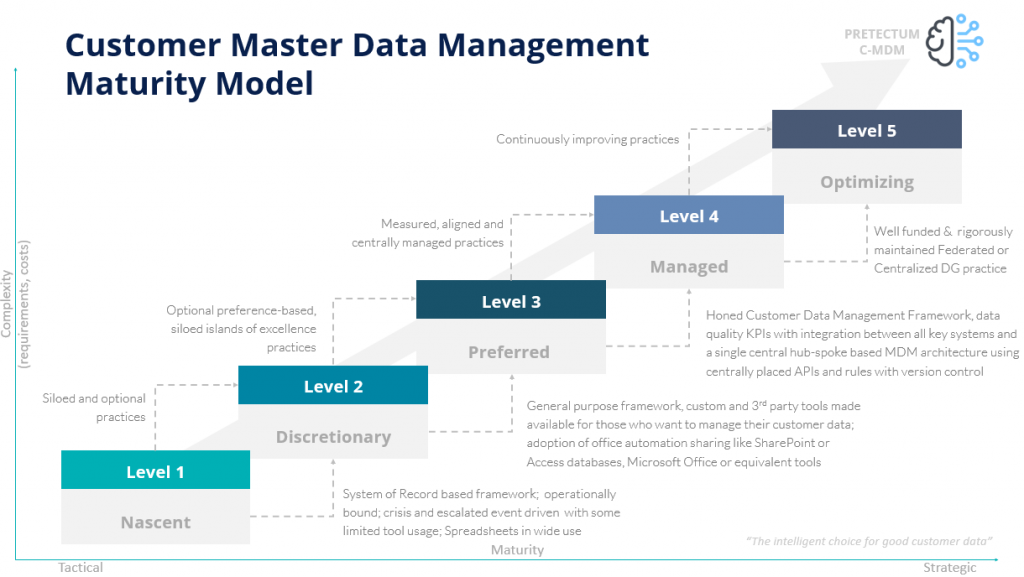In a discussion with any industry analyst or master data management (MDM) software solution vendor, you may encounter the topic of single vs multi-domain MDM solutions.
At face value it may seem an entirely intuitive choice, “of course I want multi-domain”, multi implies more right? Well not necessarily.
There are many factors to consider when embarking on a master data management journey apart from just the technology that you might choose to use to support your data governance initiative and part of that journey involves assessing the relative maturity of your different organizational areas in relation to data management in general.
Certain areas of the business likely have very robust data management practices, perhaps billing and accounting, perhaps service and support, perhaps even sales and marketing.
In fact, your most robust areas of the business in the realm of data management and data quality might have nothing to do with customer data at all and be entirely focused on assets, manufacturing or inventory.

Maturity plays a significant role here, because the more mature parts of the business may in fact have very sophisticated and complex data management practices already in place – they may even have already invested in a collection of technology solutions to support and maintain those practices. Some of those practices may be difficult to replicate with a more generic solution.
The change process and cost to move from the status quo to something different may be very high if you don’t take stock of what is already in place and in use.
A second factor that you might want to consider is the complexity and cost. Implementing a master data management program requires dedicated resources and effort and of course some investment.
The complexity comes not just from the inherent character of working with data itself but also from the degree of cross-departmental and cross-organizational involvement that needs to be considered in data management practices.
Teams that have never worked together as active collaborators may, for example, find the idea of waiting on others or being dependent on others for decisions and results, like, “let’s create this customer account” – a challenge. This is particularly true if they have operated mostly independently of other teams for what may seem like an eternity. Again, look to teams like sales, who might establish customer accounts ahead of credit control or risk assessment.
In older and larger organizations a lot of the maturity and collaboration issues are sorted out through process controls, standard operating procedures and the like, but for smaller organizations and newer enterprises, this may still be a hill to climb.
A third factor that you will want to consider is whether you actually have a problem worth solving for all areas of the business. This ties into the maturity question, but sometimes the problems in a particular area of the business are much more pressing around data governance than they are anywhere else in the business.

You could continue to have a poorly managed product catalog and poorly managed vendors because perhaps you have very few products and very few suppliers but for most businesses., particularly Business-to-Consumer (B2C) businesses, keeping track of customers and contacts is critical to the long-term viability of the business.
For these types of businesses tackling customer master data is a fundamental objective if you have knowledge and insight into who your customers are. Or, if you want to start understanding, learning about, and getting closer to customers and prospective customers.
The question that will be top of mind in these circumstances, will be, “do you really just need something to solve for the customer master data problem?“. If you do then, a single domain solution that targets and addresses the most common pain points for customer master data is probably adequate.
You’ll want to consider that making a choice like, the adoption of a Customer Master Data Management (CMDM) solution, will likely result in exponentially greater master data management maturity in the realm of customer data management when compared with the rest of the business.
On the flip-side, single domain MDM software solution often comes with capabilities that focus specifically on the problem areas associated with that data domain. For example, dealing with customer data, you will be concerned about usage consent, PII and contact data for which there may be specific capabilities that are not relevant to inventory or vendors. You will want to have these capabilities ready-to-use and out-of-the-box rather than having to be handcrafted or optionally configured as data or functionality extensions to the platform you select.
The implementation of a single domain MDM software solution will come at a lower cost, address the specific pain that you’re seeking to address and in all likelihood, be implemented and adopted at a much faster pace than a multi-domain MDM software solution which will often take an army of consultants and a fat price ticket accompanied by close to a year of process analysis, design, implementation, socialization and adoption.
Learn how the Pretectum CMDM can help you as a single domain MDM software solution designed specifically to address the challenges of Customer Master Data Management.


